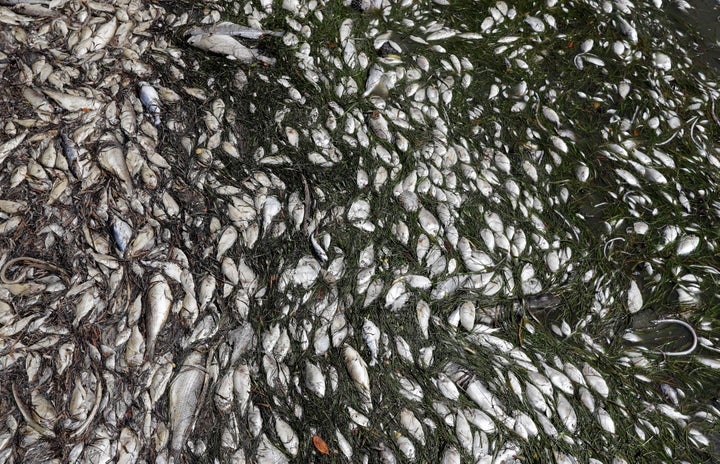A toxic algae bloom that has plagued the Florida coastline for more than a year has not shown up in water tests conducted around the peninsula this week.
The Florida Fish and Wildlife Conservation Commission first reported the conspicuous absence of Karenia brevis algae on Wednesday, and reaffirmed the development in another report issued Friday.
The bloom had a big impact on Florida: Since the fall of 2017, it shut down beaches and sickened people who swam in the water. It covered stretches of the coast in dead fish, even snuffing out larger creatures such as sharks, manatees, dolphins and endangered sea turtles.
It also prompted Gov. Rick Scott to declare a state of emergency in August, freeing up funds to combat the issue.

Yet the bloom has faded in recent months, The Miami Herald reported this week, noting that the last high concentrations of the algae were found late last month.
K. brevis produces dangerous brevetoxins, which can kill birds and marine life and prove harmful to humans if inhaled or touched, causing abdominal pain, vomiting, diarrhea and neurological problems.
“Red tides,” named for the color they can turn the water, occur each year on Florida’s southwest coast but intensify with high temperatures and pollution. The algae only rarely turns and travels up along the East Coast ― the last time that happened was 2007, according to the FWC.
Researchers warned that the recent bloom could become the norm if the problem of climate change is not addressed promptly.
